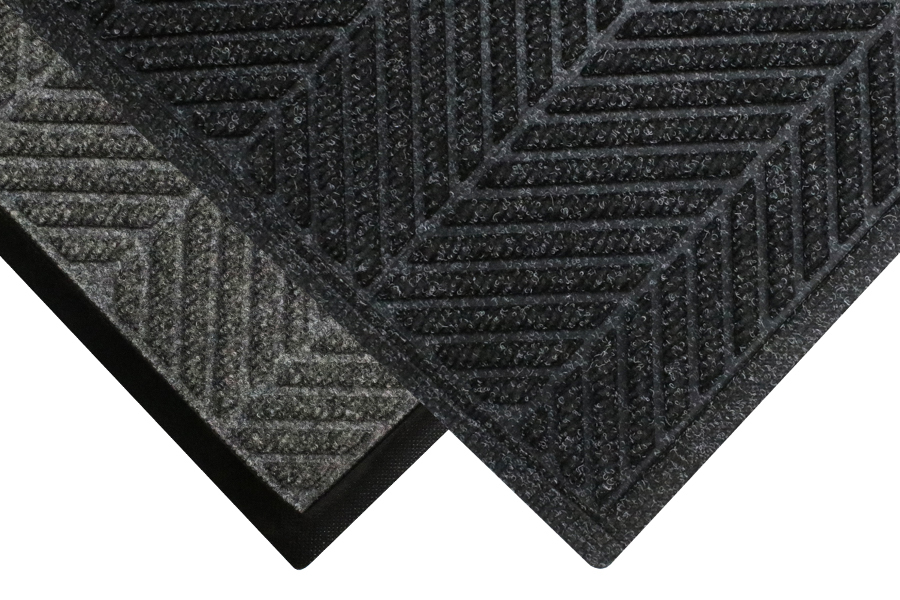
The Drying Process of Waterhog Mats
In this article, we’ll look at the drying process of Waterhog mats.
Let’s dive in.
Do Waterhog Mats Dry Quickly?
Yes, due to the properties and how they are designed, the WaterHog mat dries quickly compared to others.
The Structure and Design of WaterHog Mats That Promote Fast Drying
It takes more than just material; structure, too, plays a pivotal role in facilitating rapid drying times. The uniqueness lies within the bi-level construction adopted by WaterHog mats, which contributes to their quick-drying capabilities.
The surface level contours are designed strategically to trap dirt while letting water percolate down to the second layer where it’s stored safely away from your shoes and floors until it evaporates naturally. Notably:
- This design allows maximum ventilation through the mat, enhancing its self-drying speed.
- The raised “water dam” edges serve both to prevent overflow and to promote accelerated evaporation.
Through this clever architecture, WaterHog mats endorse a cleaner space while enabling swift drying.
Factors Affecting Drying Time
Environmental elements can play a critical role in defining how quickly the mat dries once it has fulfilled its purpose of moisture absorption.
Airflow and Ventilation Around the Mat Area
The primary external factors affecting the drying time of WaterHog mats are airflow and ventilation. Without proper air circulation, even a well-designed product like WaterHog Mats can take an extended period to dry.
When we place these mats in areas with good air circulation, they benefit from constant exposure to moving air which helps accelerate evaporation—the process responsible for drying. Enhanced ventilation quickens this natural process and thus reduces overall drying time.
In contrast, limited or stagnant airflows could trap moisture within the fibers longer than necessary. Hence, if you want fast-drying action from your WaterHog Mats, ensure their placement facilitates ample airflow.
Humidity Levels and Its Impact on Drying Time
Next up on the list: humidity levels. Humidity refers to the amount of water vapor present in the atmosphere around us. In other words, higher humidity means more ambient water vapor with a lower capacity for additional moisture.
Therefore, in high-humidity conditions such as rainy or tropical climates, even top-notch products like WaterHog mats might require additional time to dry fully. This delay occurs because increased atmospheric moisture content slows down evaporation – there simply isn’t enough room left in the air for the evaporated moisture to escape from your mat!
While we can’t control mother nature’s whims outrightly, using dehumidifiers indoors may help overcome any humidity-related setbacks regarding drying times.
Placement of The Mat and Exposure to Sunlight
UV radiation serves as a natural accelerant aiding textile drying processes globally. So, it comes as no surprise that exposure to sunlight can help the mat dry faster, too.
Positioning your WaterHog mats in areas exposed to ample natural light (like a porch) will aid in quicker water evaporation due to heat from the sun. Plus, UV rays from the sun can also have an antibacterial effect, keeping the mat cleaner and fresher for longer periods.
However, keep in mind excessive exposure may lead to color fading or damage over time, so moderation is key when considering placing mats in direct sunlight.
In conclusion, Waterhog Mats are designed with quick-drying features built into their construction material and design elements. You can enhance these characteristics by considering external environmental factors such as airflow ventilation, humidity levels, and the placement of your mat relative to sunlight exposure. Subsequently increasing overall drying efficiency!
Caring for WaterHog Mats to Enhance Drying Efficiency
Preserving the quick-drying property of your WaterHog mat will prolong its lifespan, keeping it effective and aesthetically pleasing. By implementing a few diligent care techniques, you can ensure your mat performs at its best.
Regular Cleaning and Maintenance Tips for Better Performance
- Frequency: Clean your mat regularly; weekly cleaning is recommended for busy areas or bi-weekly in less frequented spaces.
- Vacuum: Use a vacuum cleaner to remove dust and light debris from the surface.
- Wash & Rinse: For deeper cleaning, scrub using warm water mixed with a mild detergent. Rinse thoroughly afterward, taking away all soap residue.
- Drying: While it’s preferred to let it air dry by hanging the mat after washing, if necessary, a commercial extractor could also be used to speed up drying time.
Remember to check manufacturers’ guidelines before implementing any new cleaning style just in case there are specific care instructions unique to specific types of mats.
Proper Storage Techniques to Prevent Moisture Retention
Proper storage plays an important role in preventing moisture retention on WaterHog mats.
- Always make sure that your mat is entirely dry before storing it.
- Choose a well-ventilated area where air can circulate freely around the stored mat.
- Store it flat or lightly rolled instead of folded, which might lead to creases.
- Avoid placing heavy items on top of a stored mat, as this may lead to unnecessary stress and damage on it.
These measures will prevent mold growth and unpleasant odors associated with prolonged moisture retention.
Removing Excess Moisture from the Mat
If you find yourself dealing with an excessively saturated WaterHog mat due to spills or other incidents:
- Blot out as much liquid as possible using absorbent towels
- If accessible, use a wet vacuum to extract the trapped liquid.
- Hang it in a ventilated space or exposed area where air circulation is high to promote faster drying.
Take immediate action to remove excess moisture, as the longer it stays within the mat, the longer it will take to dry, and increases the possibility of microbial growth.
Thanks for reading.
